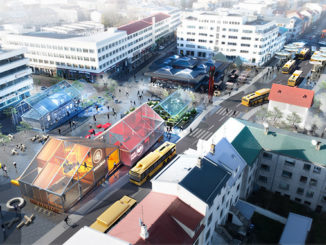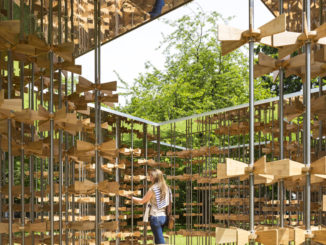Article Written by Dima Zogheib, Associate Director, Arup
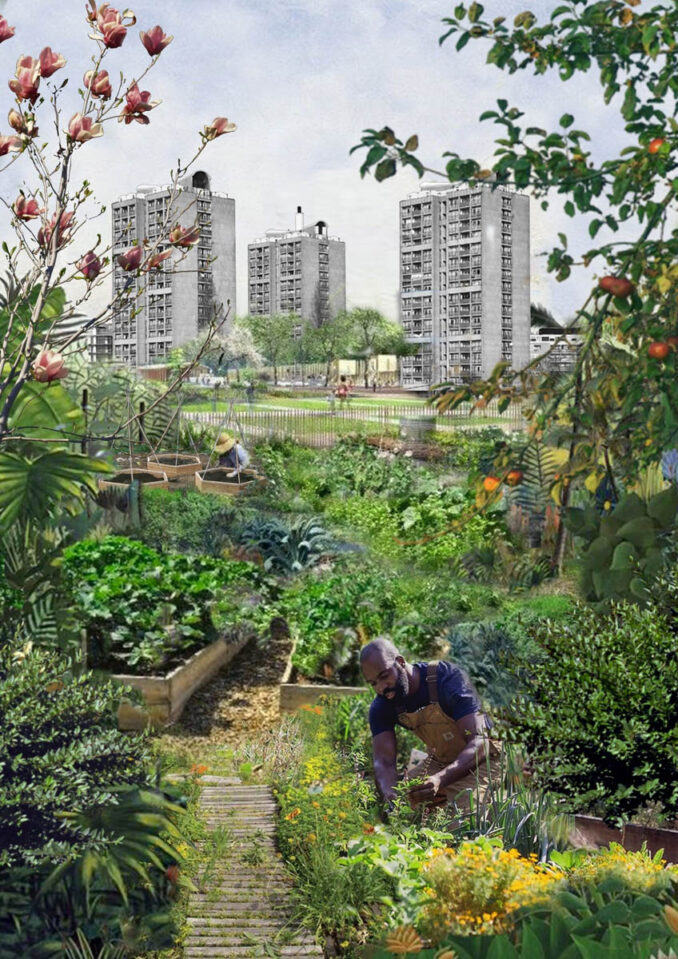
Food insecurity in cities and urban areas is a persistent problem even in the wealthiest nations. Urbanisation, whilst linked with economic prosperity, has resulted in concentrated issues such as poverty, inequality and malnutrition.
At the global level, the UN Sustainable Development Goal (UN SDG) Goal 2 on Zero Hunger contains targets to end all forms of hunger and malnutrition by 2030[1], and a recognition of the importance of sustainable and resilient food production systems that help maintain ecosystems, that strengthen capacity for adaptation to climate change, extreme weather, drought, flooding and other disasters and that progressively improve land and soil quality. Malnutrition and obesity have been recognised by the World Health Organisation as increasingly linked to poor diets[2], and this is especially true for urban areas[3].
Whilst household food insecurity in cities and urban areas is predominantly driven by income poverty, increasing local community food growing can help increase access to fresh, healthy and sustainable food for people facing challenges linked to poverty or other barriers to healthy diets. Urban agriculture projects can ‘not only contribute to healthier diets but equally importantly connect people and help bring together marginalised communities’[2]. It can also improve mental and physical health, enhance biodiversity, improve the perceived or actual safety of previously derelict of underused city spaces, support economic development, and increase community cohesion[4].
Despite being the 6th wealthiest country worldwide, the UK’s rate of food poverty is among the worst in Europe and has risen dramatically during Covid-19, disproportionately affecting disabled and ethnic minority groups[5]. Nearly 2 million people turned to food banks in 2020. In London, food bank access increased by more than double the national average – with food insecurity a chronic issue for the city (20% of the population were classed as food insecure in the Mayor’s survey in 2019). London has already seen action across the city by groups who are making local spaces productive through urban growth and community projects. Whilst still primarily community-driven, and varying motivations from the enjoyment of growing your own, to spending time outdoor in open green spaces, urban food growing has seen rapidly increasing interest from policymakers, planners, and advocates where benefits are being recognised beyond food production and consumption[6].
The London Borough of Lambeth has some particular challenges, being ranked 44th most deprived local authority in the whole of England with 31% of the population living in areas of high deprivation. Lambeth Council’s recent Food Poverty and Insecurity Action Plan identifies increasing ‘access to publicly owned land for food growing’ as one of its priority areas to combat these issues. As an inner-city borough, Lambeth is very urban and densely populated and is deficient in good quality natural open spaces. Alongside the deficiency in natural open spaces, 70% of households live in flats[7], further decreasing access to green space. Climate change is another strategic priority for the borough. Rising temperatures and heatwaves are identified as particular risks associated with climate change. Urban greening and provision of green spaces have been identified as key to reduce the impact of the urban heat island effect. Surface water flooding is another climate risk in the borough. Structural mitigation of flood risk as a primary prevention measure includes better land-use management, and the conversion of concreted areas to vegetated areas (such as for food growing) can improve surface permeability, and reduce localised impacts of surface water run-off.
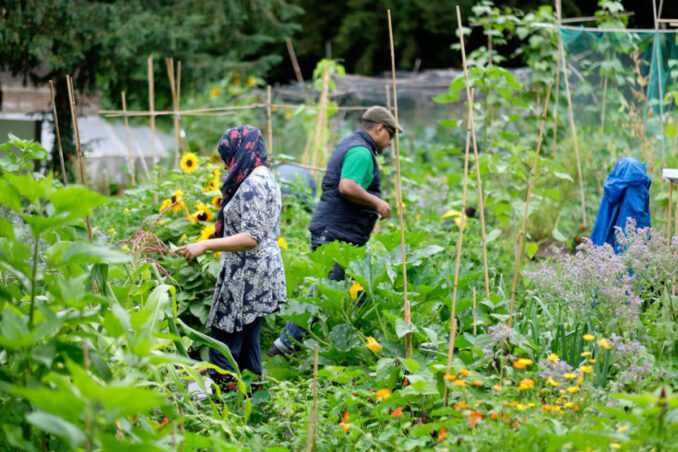
A sustainable food future through citizen-led mapping
As built environment professionals, planners and designers, we have a significant role to play in exploring placemaking opportunities through food to better value food growing spaces and consider their wider resilience benefits to people and the city as a whole.
In 2020, Arup partnered with Incredible Edible Lambeth CIC (IEL), a community interest company, to explore opportunities for a sustainable food future in the London Borough of Lambeth. We developed a citizen-led map that identifies existing food growing spaces and suitable potential spaces for food growing with the aim to increase the land available for food production in the borough by 15% so that all people of Lambeth are able to access healthy, affordable food, grown and produced locally, particularly in more deprived neighbourhoods within the borough.
The map was developed through a combination of GIS, open-source data and crowdsourcing, with food growing spaces prioritised based on need and feasibility. This includes factors such as income deprivation, health deprivation, population density, green space deficiency, land ownership, land use constraints, contamination amongst others.
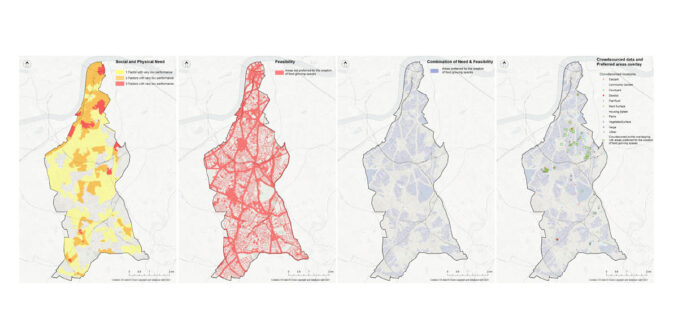
The Covid-19 pandemic has exacerbated inequalities, and a particular area that has been highlighted is digital exclusion. With the shift to online working, engagement and events, the mapping included a web-based interactive map where citizens are able to indicate a food growing space, and an analogue option for those who do not have the means by which to connect virtually, whether limited by equipment (e.g. having laptop/computer or smartphone), capability (IT literacy) or connectivity (reliable internet service).
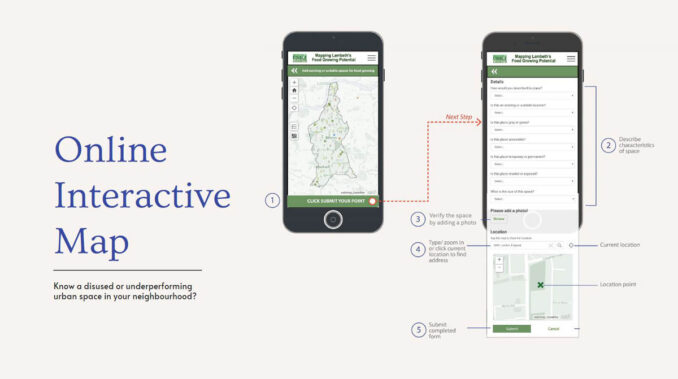
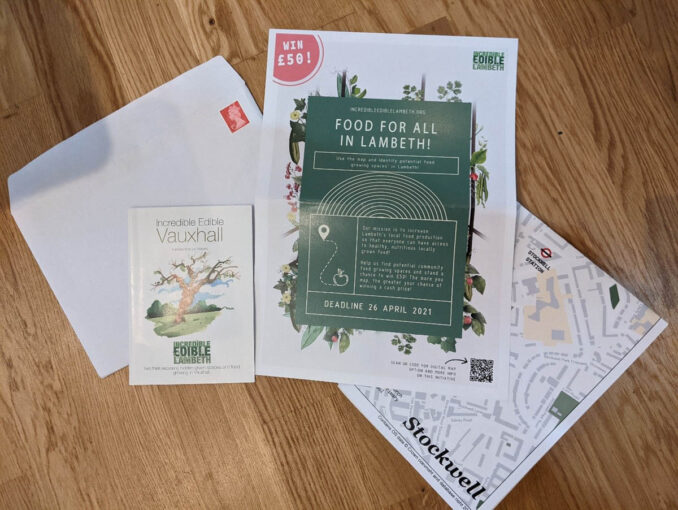
Over 120 potential growing spaces spread across 10+ different spatial typologies were mapped with significant contributions from residents and businesses alike, these include churchyards, school grounds, underutilised and derelict land, car parking spaces, rooftops, road verges amongst others. The findings revealed significant potential for the borough identified by those who live and work there.
The final map will be a catalyst for change, demonstrating the contribution food growing spaces could do in supporting access to healthy, affordable and locally produced food, improving health and wellbeing, increasing the number of green spaces particularly for food-insecure and green space deprived communities, supporting climate action and informing future local development plans.
Lambeth Food Mapping, Project Team: Dima Zogheib, Joana Ferro, Stephanie Robson, Niki Apostolopoulou-Maniati (Arup), Janie Bickersteth (Incredible Edible)
[1] https://www.un.org/sustainabledevelopment/hunger/
[2] https://apps.who.int/iris/bitstream/handle/10665/255413/WHO-NMH-NHD-17.3-eng.pdf;jsessionid=6FC5DF73886E90DE388CF33CA3024A04?sequence=1
[3] https://www.iied.org/urban-food-insecurity-malnutrition-are-about-more-just-food
[4] https://www.sustainweb.org/localactiononfood/growingandplanning/
[5] https://www.sustainweb.org/foodpoverty/whatisfoodpoverty/
[6] https://www.frontiersin.org/articles/10.3389/fsufs.2020.534219/full
[7]https://moderngov.lambeth.gov.uk/documents/s121115/04b%20Lambeth%20Annual%20Public%20Heath%20Report%202020.pdf [PDF]
Image Credits: ARUP unless otherwise captioned
‘Sustainable Placemaking Through Food: The case of Lambeth in London’
written by Dima Zogheib, Associate Director, Arup
Trained as a landscape architect, I specialise in sustainable, resilient and inclusive design. I work on complex and large-scale landscapes from concept through to delivery, smaller-scale community initiatives, and advise governments on strategies to help cities respond to critical agendas such as urban resilience and inclusive planning.
Dima Zogheib
My notable projects include the landscape design for Oman Botanic Garden, Tirana’s Orbital Forest, resilience strategies for more than 25+ cities globally with the Rockefeller Foundation’s Resilient Cities Network, and designing for child-friend cities in Belfast, Northern Ireland.


